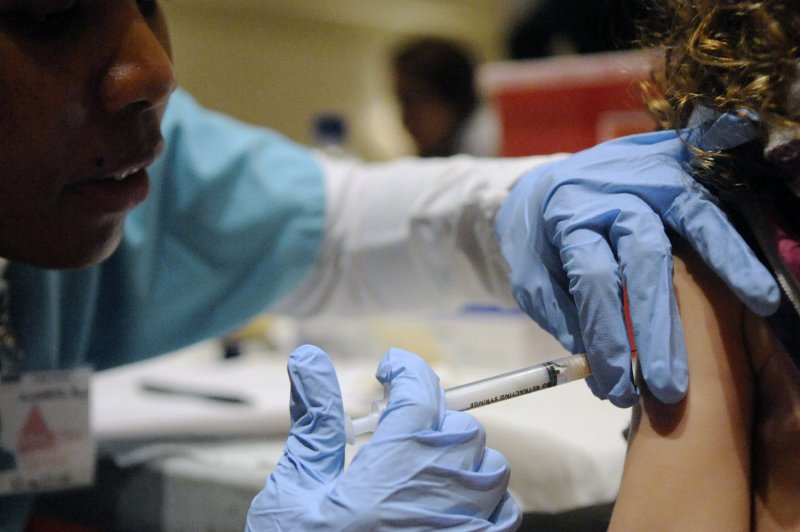A health official administers a flu shot at a middle school in Washington. Health officials stressed it is not too late for individuals who have not gotten a flu shot to do so, as the nation hits what is generally the height of flu season in January and February. File photo by Alexis C. Glenn/UPI |
License Photo
Feb. 4 (UPI) -- The influenza virus is spreading at a high rate in 40 states as the nation hits what is traditionally the peak of flu season in January and February.
According to the Centers for Disease Control and Prevention, the two most common types of the flu virus, Influenza A and B, are spreading at a rate of 12,000 cases per week, though that number is likely much higher because many adults do not see a doctor for what's perceived to be a common cold.
Influenza has been blamed for 15 child deaths since mid-January, the CDC reported. The number of adult fatalities in the same time period was not available.
The CDC said flu activity is "high to extremely high" in 15 regions of the country. New Jersey, Kansas, Missouri, Oklahoma, Pennsylvania, New York and South Carolina are among the states with the highest rates of flu or flu-like illnesses.
Doctors stressed it is not too late for individuals, particularly those at high risk for infection, to get a flu shot to help ward off contracting the virus. Flu shots contain dead versions of the most common flu strains. Because the virus is dead it cannot infect a person, but it does heighten the body's immune system to the virus, making it much more likely it will kill off the virus before an infection sets in.
Flu season in the United States is typically defined as October to March, but individuals can contract the virus at any time of year. While many people blame the cold winter weather for getting sick, there is no direct link between weather and the flu virus. Rather, winter is generally a time when people spend most hours indoors, making the spread of the highly contagious virus easier. Flu diagnoses tend to hit a peak in January and February, after children return to school from winter recess.
Flu can generally be distinguished from the common cold by the sudden onset of symptoms. Where cold symptoms usually present over the course of several days gradually getting worse, flu symptoms come on quickly, often in just a few hours, and are more severe. The most common symptoms are fever or chills, headache, soreness and being overly tired.
Because it is a virus, there is no direct treatment for influenza. Doctors generally recommend painkillers and decongestants to treat the symptoms. Other than that, the best remedy is bed rest with plenty of fluids to prevent dehydration.















